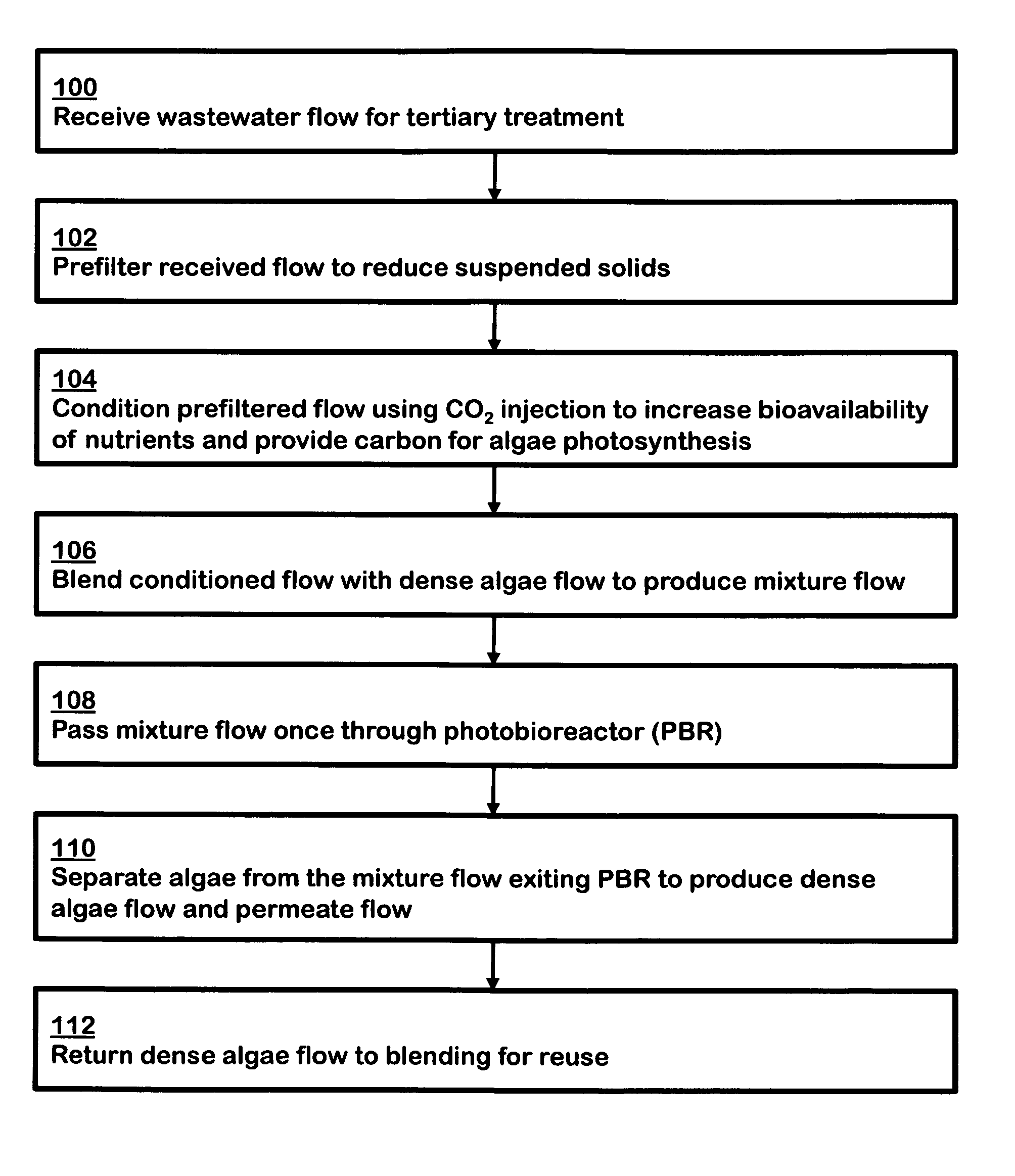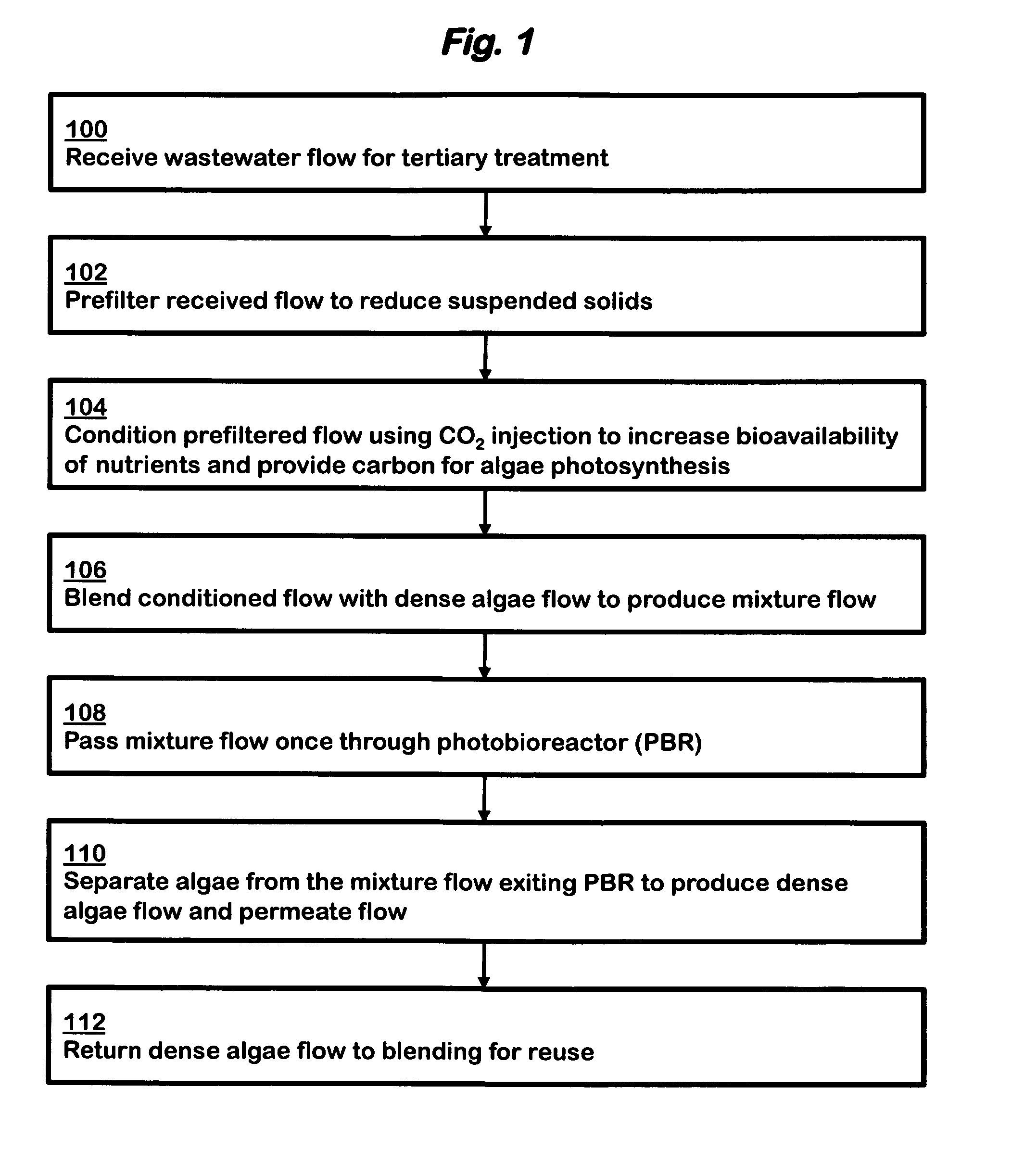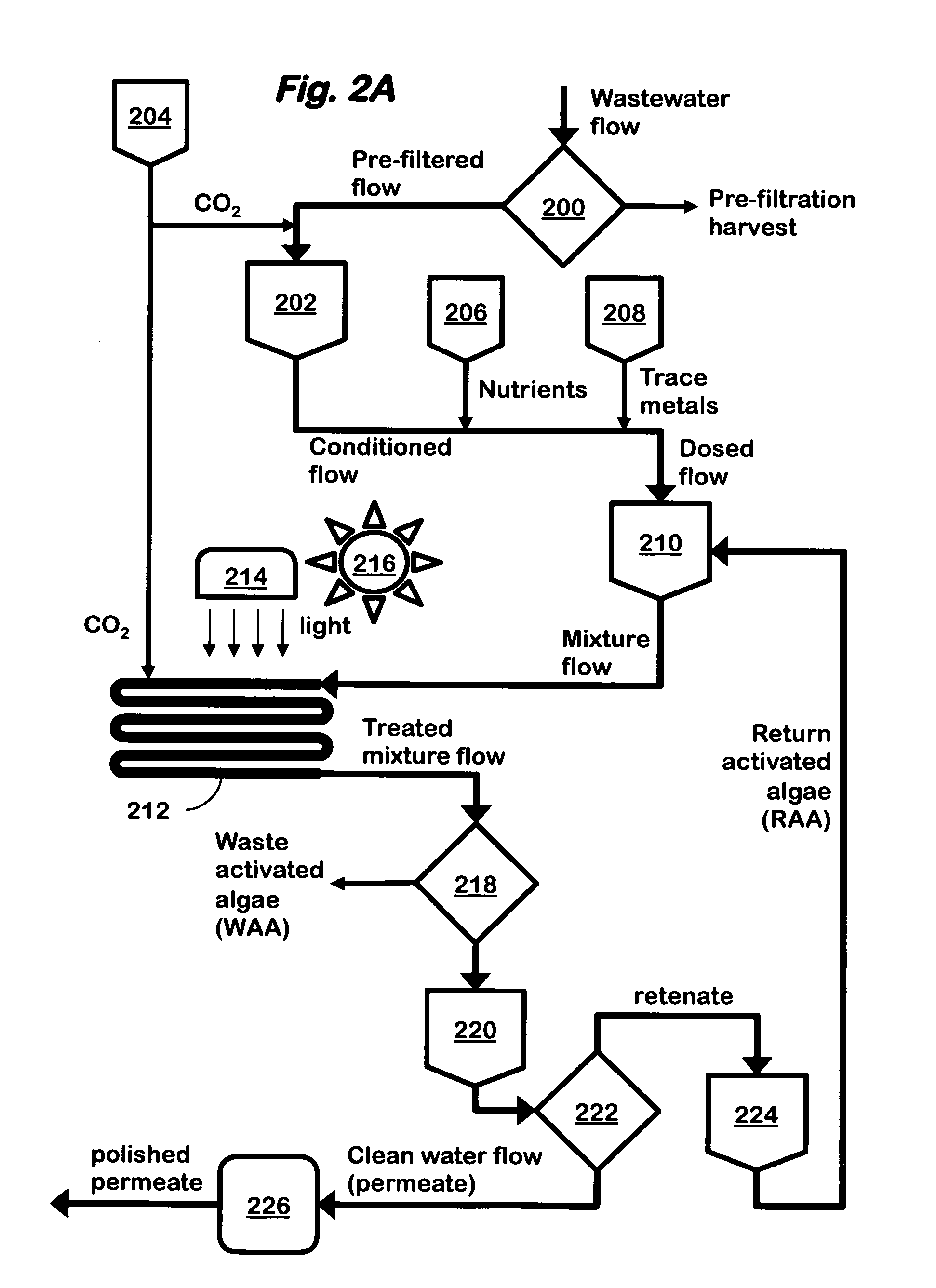Advanced biologic water treatment using algae
a technology of algae and water treatment, applied in the direction of multi-stage water/sewage treatment, other chemical processes, separation processes, etc., can solve the problems of biofilm accumulation, limited re-use, and water discharge, and achieve the effect of reducing suspended solids and increasing the bioavailability of nutrient constituents in water
- Summary
- Abstract
- Description
- Claims
- Application Information
AI Technical Summary
Benefits of technology
Problems solved by technology
Method used
Image
Examples
Embodiment Construction
[0027]Embodiments of the invention provide advanced, algae-based, water treatment technologies to remove nutrients, trace metals, and other pollutants from the water. Unless otherwise qualified, the term “water” in the present document is defined as including wastewater, sewage, as well as natural and industrial effluents. In the exemplary embodiments described below, unique technologies and processes work together in a continuous, controlled, and automated manner that result in clean water for discharge or re-use. A preferred embodiment of the system specifically targets the reduction or removal of nitrogen, phosphorus, total suspended solids (TSS), biological oxygen demand (BOD), carbonaceous biological oxygen demand (CBOD), polychlorinated biphenyl (PCB) and removal of trace metals, such as Iron, Magnesium, and Selenium, and other pollutants and regulated compounds. The system may be modified to target other constituents. It may also provide industrial plant partners with the opp...
PUM
| Property | Measurement | Unit |
|---|---|---|
| wavelength | aaaaa | aaaaa |
| wavelength | aaaaa | aaaaa |
| wavelength | aaaaa | aaaaa |
Abstract
Description
Claims
Application Information
 Login to View More
Login to View More - R&D
- Intellectual Property
- Life Sciences
- Materials
- Tech Scout
- Unparalleled Data Quality
- Higher Quality Content
- 60% Fewer Hallucinations
Browse by: Latest US Patents, China's latest patents, Technical Efficacy Thesaurus, Application Domain, Technology Topic, Popular Technical Reports.
© 2025 PatSnap. All rights reserved.Legal|Privacy policy|Modern Slavery Act Transparency Statement|Sitemap|About US| Contact US: help@patsnap.com



